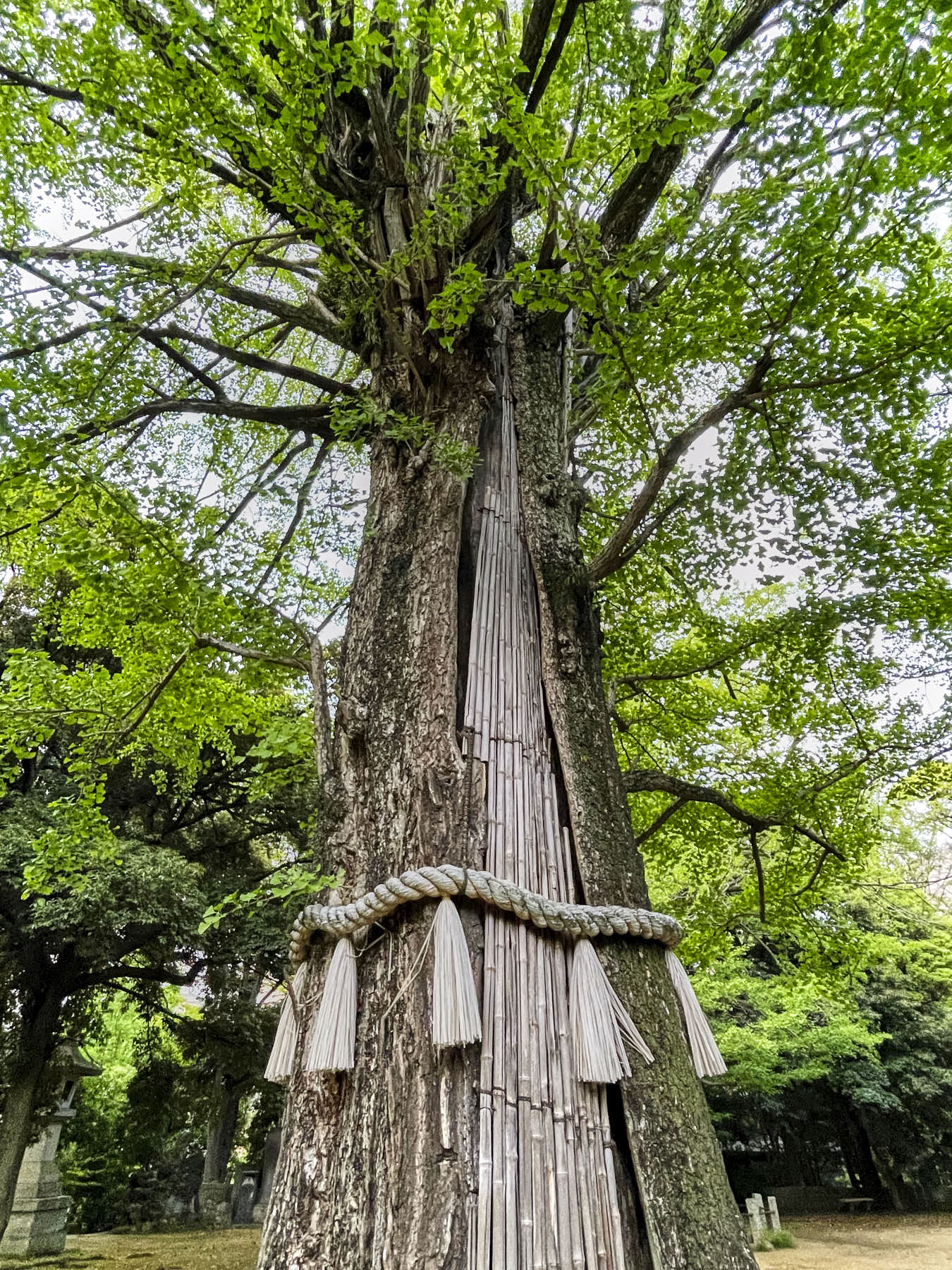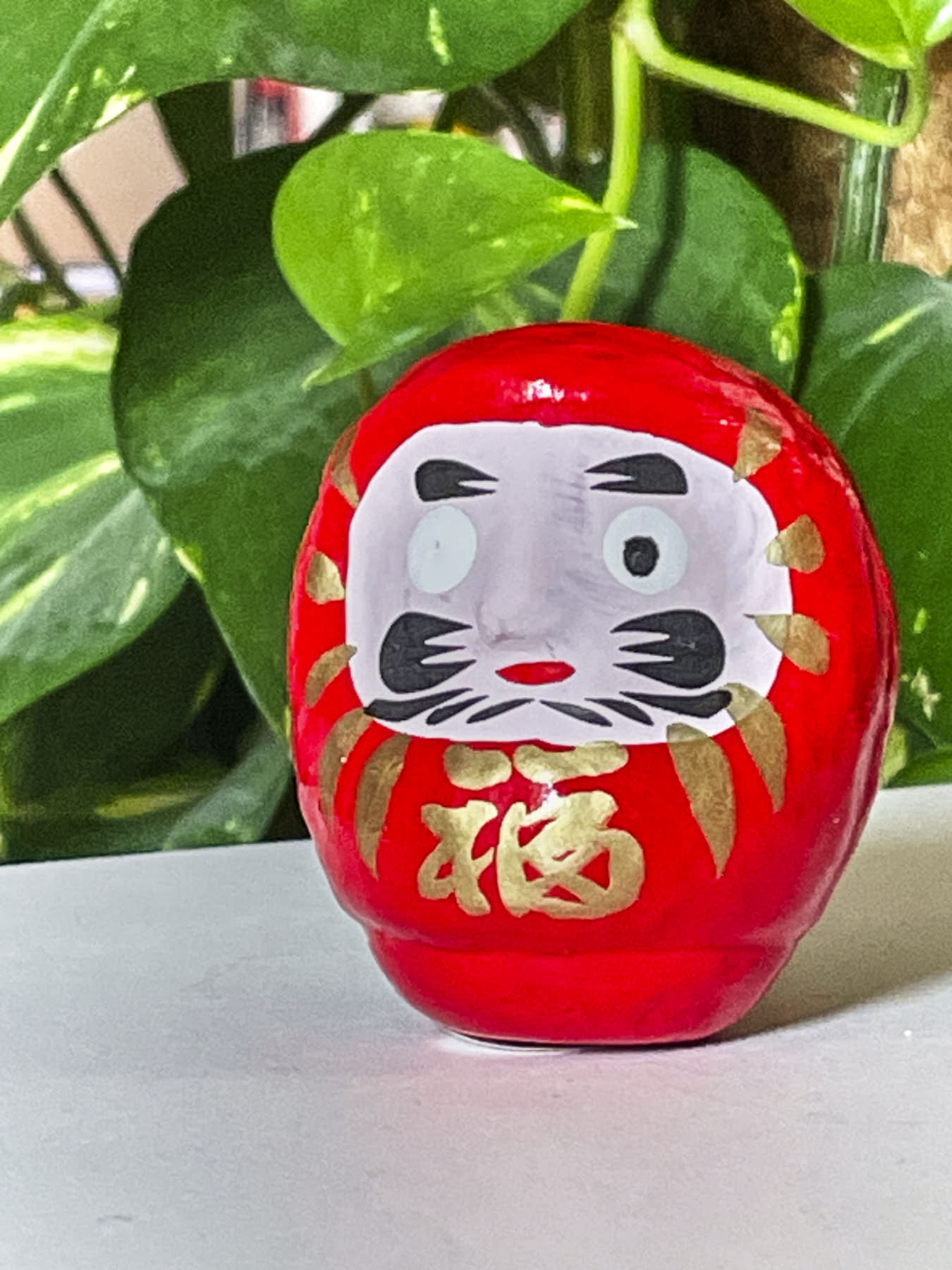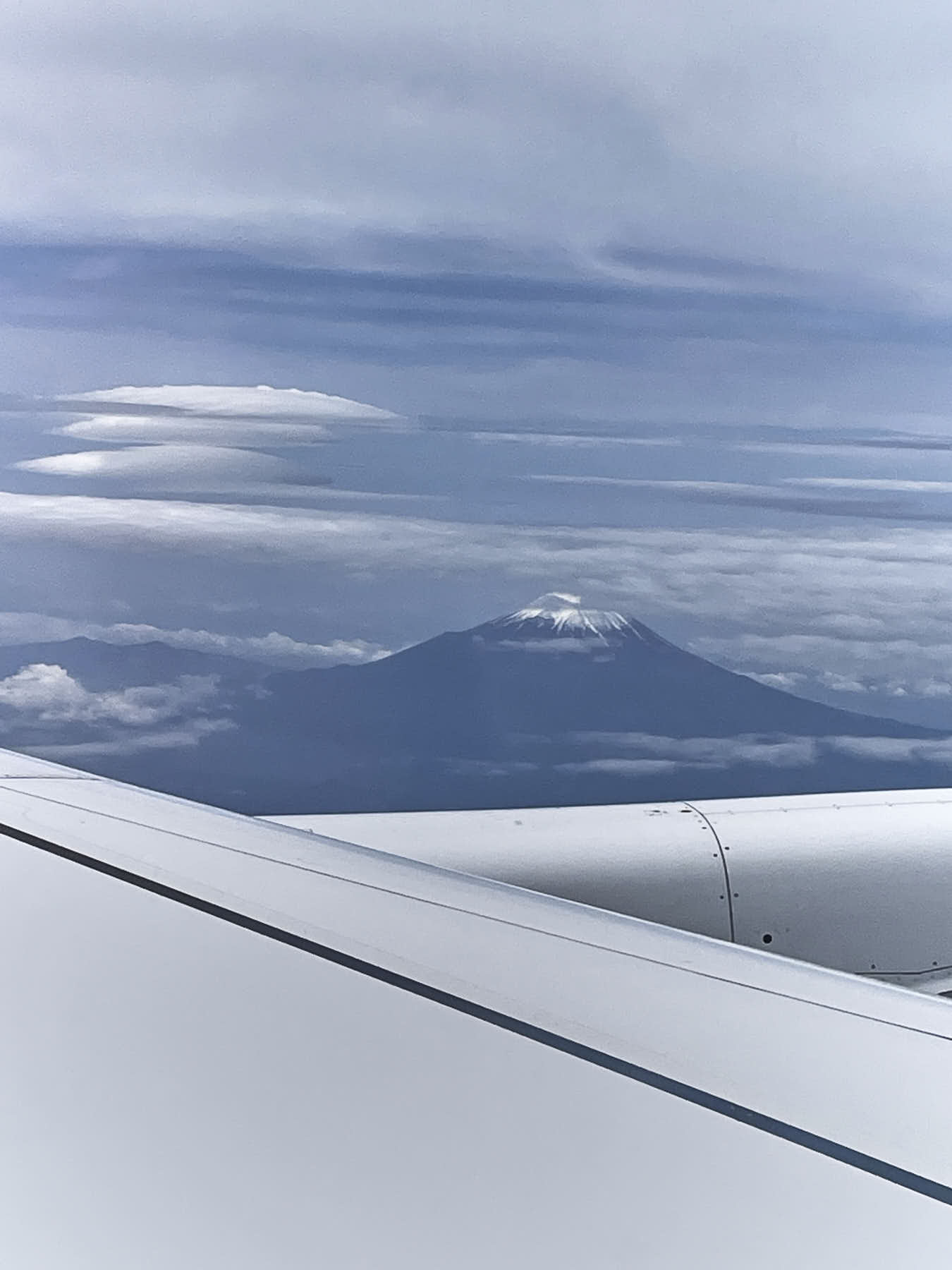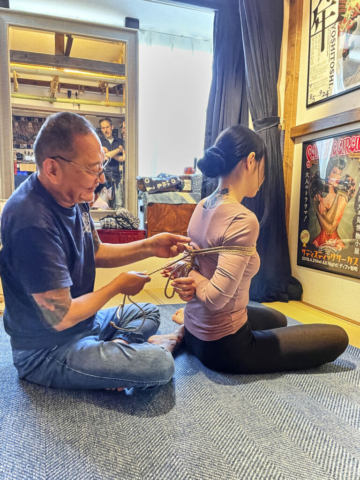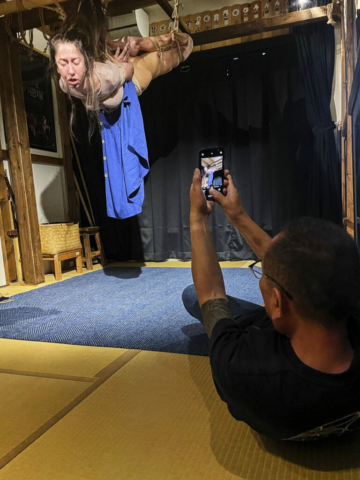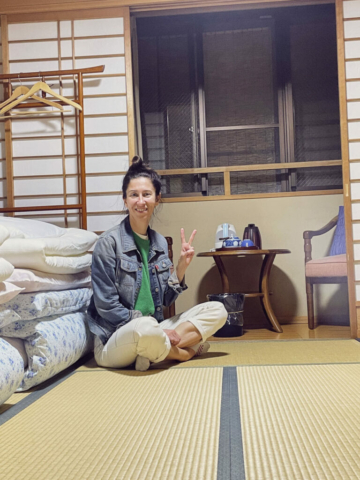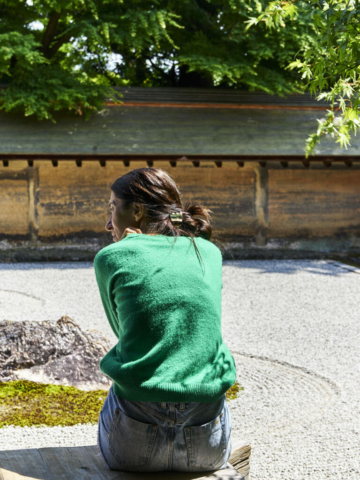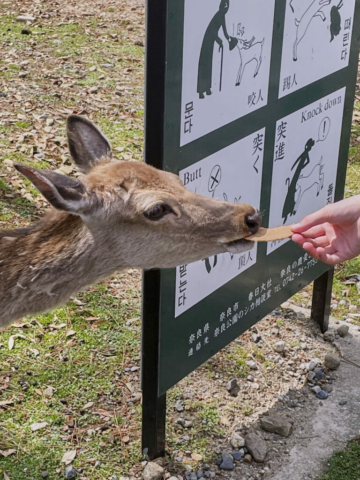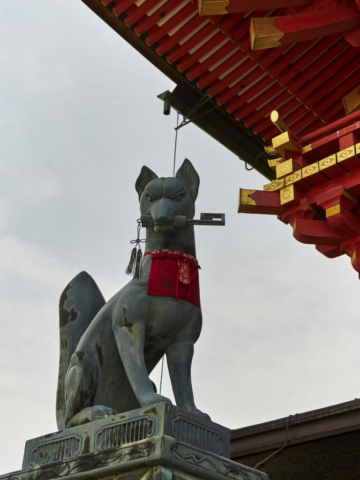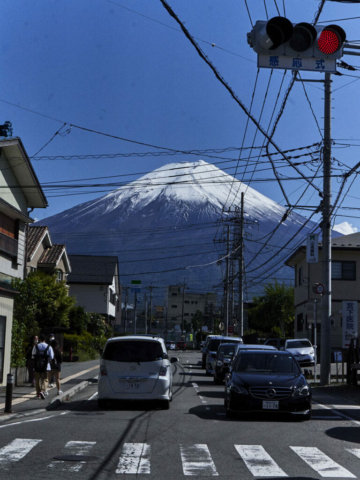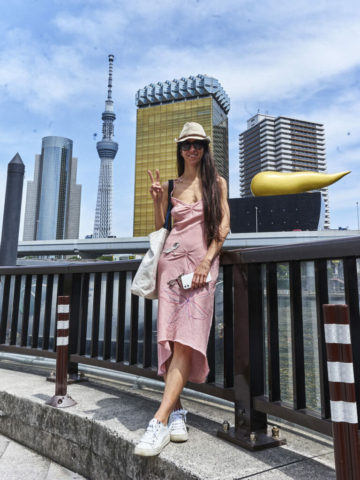Researching and re-connecting to our passion
Finally, we went back to Japan. 2019, as we did our first trip together – mainly to see our friends and teachers performing at the Maniac Festival in the infamous DX Theater – we promised to come back soon. But Covid kept us away from Japan for 4 years.
Last year in May we spent good 2 weeks in Japan – still too short for our taste, but long enough to deepen our personal relationships and gain important impressions.
Heritage
First of all, it was important for us to meet and reconnect with Naka-San and Iroha-San. They were the ones who made the first – and biggest – impression on us as we both started to seek our path in Kinbaku – back in 2012.
Now, 11 years later, everything was new. We were almost full professionals in 2019 – and gave up this dream over COVID-19. Natasha wrote a book. Alexander studied for 5 years with Riccardo Wildties and left Kinbaku LuXuria Instructors Family in 2021.
Kinbaku is still alive, still our passion – but our path is now open again.
Naka San gave us a warm welcome, literally: a very warm hug.
The first half of our private tuition we spent discussing. He shared his concerns about the increasing division of the scene and his thoughts about teaching beyond patterns.
„You can tie all my figures,“ he said, but boy – the how is important. Watching him so closely during the demo is a great privilege. His control of the rope and his fingerwork are just so impressive. More than 30 years of practice left its traces. So many more things to learn…
And then just watching Iroha-San getting tied was worth the long flight.
So, check on the first item of our mission.
Research
Our research was centered around the topic of Japanese culture and what it means to us. One important activity was to revisit some places from Alexander‘s first travel to Japan in 1999 and experience them together.
So we did a lot of „tourist“ activities this time. We visited Kyoto and Nara. We spent a day at Kawaguchi Lake.
We believe that some things need to be seen and felt to be really understood. One can read a lot about Japanese culture, aesthetics, spirituality, and tradition. Many things can be studied from afar.
Sitting on the wooden porch overlooking the dry landscape garden of Ryoan-ji is a different thing. This one is a masterpiece. It leaves no one untouched. With an iron fist, it takes you down. Sit. Look. Hold your breath. What a masterful management of empty space.
Alexander has been there on a rainy summer day in 1999. Alone. Now we sat down together. There were more people around, but the impression was not less powerful.
The second moment that rewarded us for the long flight. We had many more moments. In Nara, finally stepping out from the stream of tourists – into a silent, magical forest. Hiking up the hills towards Fushimi Inari shrine – again after leaving the beaten path with the stream of tourists. In silent streets in Kyoto and Tokyo, just walking.
And, last but not least: seeing Fuji-San.
Networking
We also were very social this time. Not only did we travel partly with our friends Scot and Tanja, but also we met people from both the old and a new generation of Kinbaku enthusiasts.
We met Kitaro Kasukabe – young Japanese student of Naka San (rope) and Erisa Sato (photography) who makes Roca Magazine. He does everything himself: concept, photography, layout, print, and fulfillment. We could bound over the fact that we both carry the bags with the envelopes to the local post office.
Kitaro is very talented – and his photography is really fresh and innovative. We are very proud to have him as the featured artist in our issue #15 of Kinbaku Society Magazine.
We also spent quite some time with Manami Okazaki. She is a writer, editor, and publisher and also quite long in the scene and worked as model with some of the most famous Japanese photographers.
She invited us to her house in one of the last remaining neighbourhoods with wooden houses in Tokyo. There we flipped through her extensive library of Japanese Photography books and discussed Kinbaku underground culture.
She introduced us to one legend of the Showa Times: Shikou Shima. We were allowed to watch a lesson he gave to beginners in the Bar Ecole.
It was a very special moment for us. We never saw Japanese teaching Japanese. Think about it. At best we experience Japanese teaching us, non-Japanese.
We had a very full agenda – and same time we missed a lot in this so fully packed May 2023: Unfortunately we could not attend Naka-san’s Seme Research Group. We also missed most of the Sanja Matsuri Festival.
A very special day
But we were granted a very special present. Sugiura Norio Sensei wanted to do a photo shoot with Natasha. “Let’s make some art out of cruelty-free bondage,” he said. He gave himself – and us a topic: Misery.
We were super excited and nervous same time. Could we ever fulfill his creative demands? Sensei was warmly welcoming us in his office. Natasha suffered a lot over 4.5 hours / six sets in “cruelty-free” bondage. I tried to keep up with Sensei’s demand for tying “out of the box” – to the best of my ability. I also learned a lot (again) about his way of setting the light.
We do not know if he ever decides to show the results to the public. What we saw was incredibly beautiful.
We felt honoured by this special invitation.
“Let’s have some dinner,” Sensei said, after the flush-lights went off. “What do you like?”
“Japanese food” – we answered (what else?)
He didn’t approve…
